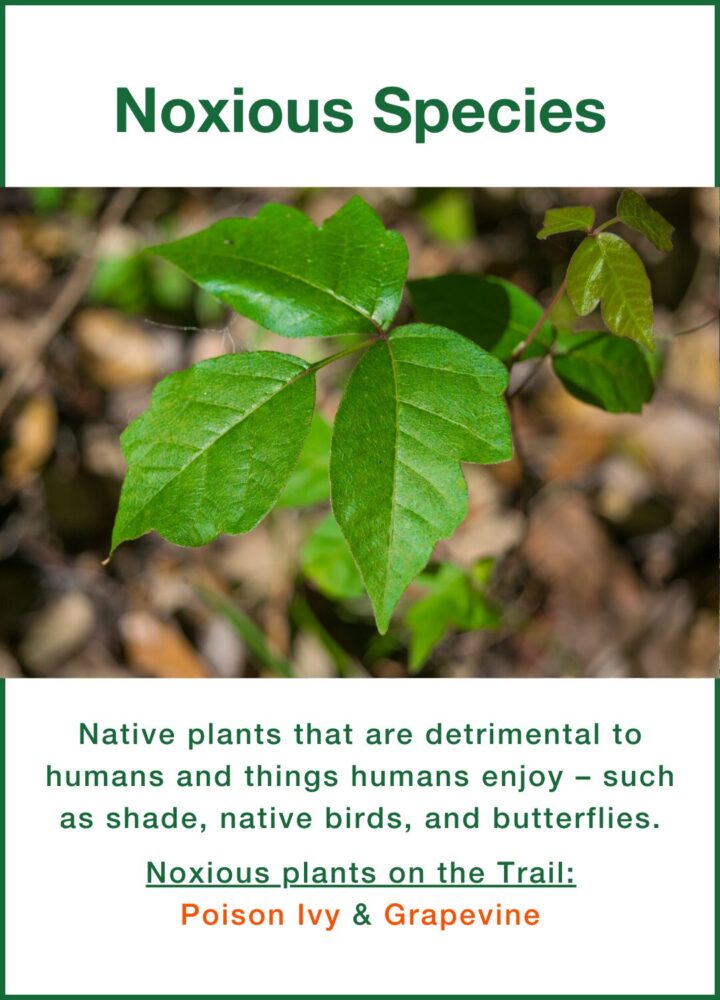Goats on the Trail

Have You Herd?
The Butler Trail Has Goats!
Throughout the year, we bring in a special team of eco-friendly landscapers—our hardworking herd of goats! These adorable, hungry helpers munch their way through overgrown vegetation along the Butler Trail, tackling tough-to-reach areas and even taking on pesky poison ivy. Keep an eye out for our newsletter and on our social pages to be the first to know when the goats arrive!
Have You Herd?
The Butler Trail Has Goats!
Throughout the year, we bring in a special team of eco-friendly landscapers—our hardworking herd of goats! These adorable, hungry helpers munch their way through overgrown vegetation along the Butler Trail, tackling tough-to-reach areas and even taking on pesky poison ivy. Keep an eye out for our newsletter and on our social pages to be the first to know when the goats arrive!
Why Goats?
Vegetation Management
Goats love to eat! Since they are more than happy to be used as a source of vegetation management, we decided to put them to work! They will be clearing out some of the overgrown areas around the Trail – including areas of thick poison ivy. Goats eat noxious (native plants detrimental to humans and pets) and invasive (non-native plants detrimental to the ecosystem) plants. We are specifically putting the goats in areas of highly invasive and noxious plants. By controlling the invasive plants, we also increase the park’s safety by decreasing the risk of wildfires and increasing sightlines.
Eco-friendly option
Contractors cannot always get where we need them to. Goats can! Goats have sure and steady footing that allows them to work in areas that contractors and volunteers cannot access easily – such as steep hills or areas with too much poison ivy and/or brushy growth. Unlike machines, which reduce air quality and compact soil, goats get the job done without harming our green spaces. Goats also keep carbon and nutrients local by consuming the plants, processing the materials, and excreting the waste. Yes, the goats also fertilize the area!


Want a Goat Without All The Responsibility?
With our Adopt-a-Goat program, you can see your impact on the Trail firsthand. Visit your goat on the Trail for selfies and late-night chats-- we just caution against goat snuggles, as they are covered in poison ivy!
Sponsor Our Herd!
Goat faq
The goats are super friendly, but you shouldn’t try to pet them while they are working. They will be covered in the oils from all the poison ivy they are eating, and that is transferrable to humans.
The goats are professional workers! They will be managed and cared for by Rent-a-Ruminant, the company we are contracting with to bring the goats to the Trail.
The goats have special access, and are the only camping that we allow on the Trail. They will be sleeping in their pens with their handlers close by keeping an eye out!
The goats are trained professionals! Not only have they gone through extensive training before they’re ready to work, they also respect the fencing. The goats are behind a mesh fence with a low-voltage electric fence wire running its length.
The goats arrive at different times throughout the year and stay out on the Trail until the vegetation is taken care of. Keep an eye out for our newsletter and on our social pages to be the first to know when the goats arrive!
At first, we will all be very sad, missing the now familiar sound of our goat friends. Then, our team (with volunteers) will go into the area to mulch heavily, preventing the invasive plants from regrowing. During the fall and winter seasons, we will replant the areas with native species.
get to know our goats
All 150 goats on the Trail are named! Their names are on their cute little earrings, so if you want to chat up a goat, make sure to introduce yourself.
A.G
Adam
Ahsoka
Ainsley
Aires
Arthur
Arya
Astrid
Athena
Atlas
Austin
BB
Beatrice
Beau
Beckham
Benny
Bentley
Bernard
Bernice
Biscuit
Blair
Blakley
Blanca
Branch
Breve
Briley
Callie
Casper
Chai
Charming
Chewy
Chive
CJ
Clementine
Clifford
Clint
Clover
Clyde
Curly Sue
Dale
Darla
Decker
Delilah
Dom
Dory
Draco
Dundee
Eddie
Gabriel
George
Ginny
Gio
Giselle
Gizmo
Glory
Grace
Graham
Greyson
Hailey
Hannah
Hartley
Heath
Hugo
Hal
Jaxson
Jethro
Johnny
Juliette
Karis
Karisy
Kate
Kevin
Kip
Korben
Lacey
Leeloo
Lil Bit
Lil Debbie
Logan
Lola
Lyla
Mabel
Major
Master
Melody
Merlin
Mia
MiLu
Missy
Misty
Mocha
Moon Pie
Natalie
Nelson
Nestle
Oakley
Orion
Orville
Ozzy
Paige
Paisley
Pancho
Parker
Pasha
Peachy
Pearl
Pixie
Pongo
Reba
Reggie
Regina
Ribbons
Riley
Rio
Roman
Romeo
Rona
Roo
Roxy
Samuel
Scarlet
Scooter
Scout
Sebastian
Selma
Shaggy
Shannon
Shelley
Siena
Skipper
Sloane
Smokey
Starla
Stumpy
Sven
Sylvia
Talia
Tanaka
Teddy
Tilly
Toni
Trevor
Triffle
Trina
Trinity
Uncle Rico
Walter
Wynona
Zane
Zhoul
Location: 1920 E Riverside Drive, Suite A-120 PMB 223 Austin, TX 78741
Phone: 1-855-44-TRAIL
Newsletter
The Trail Conservancy is a non-profit, tax-exempt charitable organization under Section 501(c)(3) of the Internal Revenue Code. Tax ID: 87-0699956.


